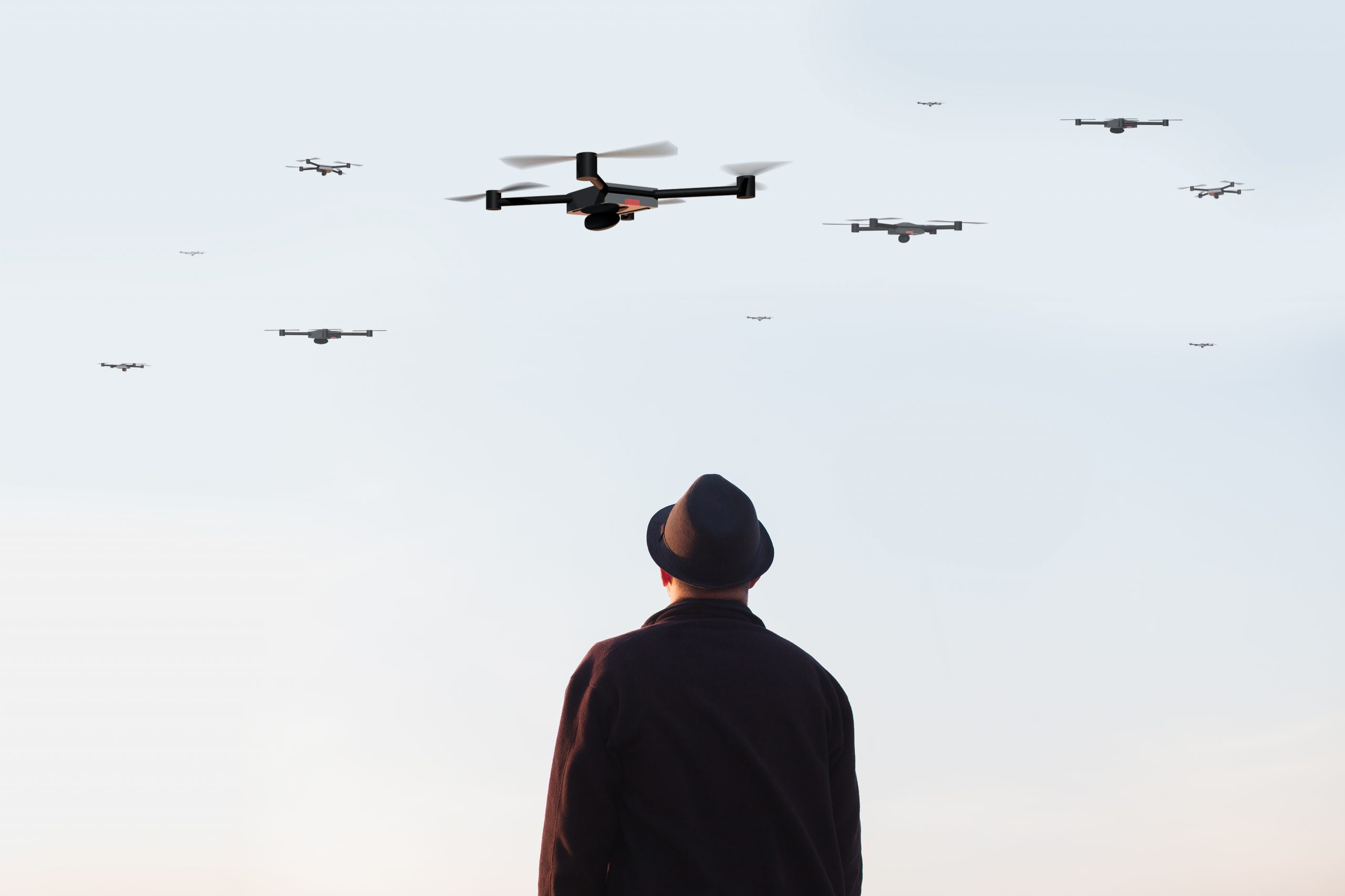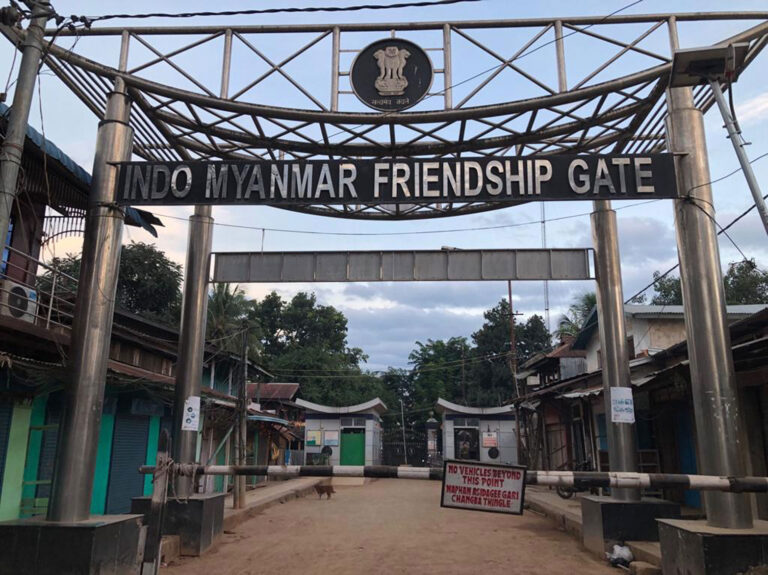
Unmanned Weapon Delivery Platforms- Should India be Ready for a Four-Pronged Battle
Sat, 09 Jan 2021 | Reading Time: 7 minutes

Recent Ngorno-Karabakh war gave a lot of lessons; most important of them was the use of armed drones; and that there is still a way to win the war without sending soldiers to the battlefield. Enemy machines can easily be destroyed by unmanned platforms. Till a decade back we were assuming the drones to be a mere intelligence and surveillance platform but now tables have turned, and UAVs have emerged as most potent weapon delivery platforms. Reasons are simple- low cost, accurate, precision guided, difficult to detect, capable to fight in electronic warfare environment and most important of them is saving the loss of precious human lives.
Historically, unmanned platforms were used in the battlefield even two millennia ago. The first known use was reported in 202 BC in China, a Han dynasty General had flown Kites with sound devices made by bamboo over the enemies. This was done to scare the enemy with the sound. In Seventeenth-Century India, forces of mighty Maratha King Shivaji used Kites to scale the fort walls. In 1855 A Russian Admiral Sir Arthur Cochrane used 12 feet long heavy kites to tow the torpedoes to the enemy. Later in US, Russia and Europe, Kites were reportedly used to lift humans, deliver the messages, drop the bombs and explosives over the enemy, as a barrage against enemy aircraft and in logistics support services.
The things have not changed much since then except that the kites of those times have been replaced by technically advanced Drones or Unmanned Aerial Vehicles (UAVs) or we can also call them as Flying War Robots. Today they have replaced the ultra-Expensive, man-dependent, heavy Military Aircraft with a cheaper, reliable, more accurate, and much more effective platform.
Lightweight Drones can now easily defy the territorial boundaries to conduct intelligence, Reconnaissance, Surveillance and even attack Missions. They can perform Artillery Observations, delivery of material and precision attacks. Their technical advances in terms of greater autonomy, artificial intelligence and swarming capabilities make the scenario much more threatening.
Key Takeaways from Ngorno-Karabakh War
Over last one decade or so, Azerbaijan spent a large amount of its earning from ‘Oil Proceeds’ to procure advanced weapon systems from Turkey, Israel, Russia and other countries like Ukraine, Czech Republic and Belarus. A big chunk of them were armed drones which were largely responsible for Azeri victory. It operated Turkish made – Bayraktar TB-2 and Armed Drones/Loitering ammunitions like Harop, Orbiter 1K, Orbiter 3 and Sky striker. It also bought surveillance platforms like Hermes 450, Hermes 900, Heron, Aerostar and Searcher Mark 2 from Israel. In the initial stage of the war, it was visualised that Armenian forces may take an edge but as the war progressed, it was Azerbaijan ruling over the skies. At every stage of War, Azerbaijan used these drones and achieved success.
- Surveillance and support of ground-based artillery– Since the terrain was hilly and movement was not possible for Artillery Observation officers beyond a limit, Azerbaijan used its inventory of various surveillance drones which helped their forces to locate, identify and destroy the targets located in the depth of the Armenian controlled territory. With the help of these drones, artillery was able to target the Armenian supply lines, communication hubs and logistics setup even when they were in the depth of mountains.
- Precision strikes on advancing Armenian Columns- Azerbaijan used loitering munitions and armed drones in a big way. It targeted Armenian Tanks, Fighting Vehicles, Artillery units, Radars and other Air Defence set up like S-300 and key communication nodes with the utmost level of precision. Armenia deployed Russian “Polye 21” electronic warfare system to counter these drones but since the Azeri drones were of multiple origins and were operating at different frequency bands, Armenia could temporarily halt their operations for just 4 days and Azeri forces destroyed these Electronic Warfare platforms in no time.

Fig 1.1- Use of various drones in Ngorno-Karabakh War 2020
- Prior reconnaissance of area – As earlier mentioned that the entire area was hilly and movement was difficult, Azerbaijan carried out widespread reconnaissance of the area using these drones and moved its forces and pieces of equipment accordingly. Using this tactic, they launched a large number of surprise attacks on Armenian forces who could not have imagined the Azeri forces reaching their heel.
- Post-war Battlefield Assessment- It is extremely essential for any Army to carry out an effective assessment of the battlefield before moving in the reinforcements after a battle. These drones proved to be very much helpful in the effective distribution of reinforcements in the field and hence much effective utilisation of force structure.
Today the global forces are operating various types of Unmanned Aerial Platforms which include unarmed as well as armed both types. These machines which are as small as 16 gm Black Hornet Nano (a US-made UAV) to a massive 40 feet Wingspan Global Hawk UAV which is even bigger than most commercial airliners. As far as the payload is concerned, most UAVs now have almost similar payload capacity as of a common fighter aircraft.
Strategic Implications of Drones in the Indian Scenario
In the last decade, we saw extensive use of Drones for the bombing operations in the Middle East, Afghanistan and Pakistan and they proved to be quite effective. When it came to targeting the terror leadership, Coalition Forces (especially America) targeted several key commanders of banned terror groups in the Middle East, Afghanistan as well as Pakistan using these drones. Such was the precision that even a person fleeing away on a motorcycle was spotted, tracked and killed while the weapon delivery platform was flying in high altitudes. With the least possibility of being detected, these steel birds can attack their target with ultra-precision and achieve desired results.
In such a scenario, the million-dollar question is “do these birds have a strategic implication?” The answer is a clear ‘yes’. They are just not an example of technical innovation, they are an offensive alternative in the form of a cheap, precision-guided vehicle capable of passing any security parameter and attacking nearly any military asset. They are today’s Kamikaze Pilots who can attack anywhere anytime anyway. The future wars will be fought by these drones only.
Indian Scenario and four-pronged threat
Currently, India is facing a four-pronged threat. While Pakistan and China are two of them, threats arising out of Sea and terrorism cannot be ruled out. Let’s discuss them one by one.
China- China has been operating a large variety of Armed Drones as well as Smart loitering munitions. While Armed UAVs like CH-3, CH-4, Wing Loong I and Wing Loong II, it also operates a variety of munitions like ASN-301 which is a reverse-engineered copy of Israeli Harpy and is made for Anti-Radiation strikes against Radars.
It also tested an advanced swarm-based system on its CH-901 drone in October 2020 where it tested the capabilities of launching as much as 48 drones from a single truck-based platform. It is also testing a wide range of terminal sensing Kamikaze drones which can be used in the form of a drone swarm.

Fig 1.2- Unmanned Weapon Delivery Platforms of China
Pakistan- As such Pakistan does not have any armed drones developed by itself, but Iron Brother China has supplied a large number of armed UAVs to include Wing Loong II and CH-4. Reportedly it also bought infamous Bayraktar TB-2 drones from Turkey. Over last two years, we have seen many Pakistani unmanned vehicles dropping drugs, Weapons and Explosives along Indian borders in Rajasthan as well as Punjab. India must be cautious of this angle.
Threats from Sea- India has a long maritime boundary. The Indian Ocean is one of the busiest sea routes in the world and it is not difficult for any passing merchant ship to open a container and launch a few drones or Kamikaze munition targeting our Naval assets, Special Economic Zones, Ports or maybe other strategic assets. Since their detection is difficult, they may pose a serious threat to the nation.
Terrorism- Drones in the hands of terror groups can be lethal and can cause massive economic losses. In October 2016, Coalition Forces in Mosul found ISIS using drones to drop Grenades and explosives over Kurdish Forces as well as Coalition Army. Sometimes they were flying over a dozen missions at the same time. This drone threat was so severe that the Mosul offensive of the Coalition forces was stalled for many days. Since the markets are swarmed with the cheap Chinese toys, Terror attacks using these small birds cannot be ruled out even in India. A lone wolf can now effectively target even civilian assets like Schools, Hospitals and public gatherings to cause damage and spread terror.

Fig 1.3- Various types of Drones operated by Islamic State
In the Indian scenario, we have a lot to worry about. Some of the openly available vehicles in the market for as low as INR8000-10000 can carry loads of few Kilograms. They can pack a lethal punch in themselves with a little improvisation. Moreover, there is no foolproof detection measure and at times, they are detected once they are within a few meters of the target. Terrorists can effectively target our military establishments like Aircraft at bases, Ammunition and Fuel Dumps, Strategic Command centres and inflict tremendous damage. Imagine an INR10000 drone destroying a 12-billion-rupee Aircraft with precision. This is a serious economic concern. Even shooting these drones with our air defence systems will also not be economical. In Jan 2017, US Forces shot down an ISIS drone by using their $3 Million Patriot Missile in Iraq. The drone was improvised and not even costing $1000. If such kind of terror drones swarm the sky in a large number, it won’t be easy for even the best air defence system of the world.
Summary
In the current times, these unmanned weapon delivery platforms including Armed Drones, Smart munitions and drone swarms are a reason to worry for almost all the countries directly or indirectly engaged in any conflict. Most of them have started developing their countermeasures against these machines. These range from Laser Shooting, Jamming Rifles, Electronic Counter Measures, Electro-Magnetic Pulse weapons and even live Eagles trained to take out smaller drones.
However, these are not enough to counter the technological advancements in today’s scenario. Weapon manufacturers are using Artificial Intelligence, stealth features, advanced robotics, composite materials and state of art communication channels to make them more silent, invisible and lethal. Despite all this, we are still far off from an effective countermeasure against these rogue birds and we have no option than to find a solution at the earliest.
Disclaimer
The opinions expressed in this article are the author’s own and do not reflect the views of Chanakya Forum. All information provided in this article including timeliness, completeness, accuracy, suitability or validity of information referenced therein, is the sole responsibility of the author. www.chanakyaforum.com does not assume any responsibility for the same.
Chanakya Forum is now on . Click here to join our channel (@ChanakyaForum) and stay updated with the latest headlines and articles.
Important
We work round the clock to bring you the finest articles and updates from around the world. There is a team that works tirelessly to ensure that you have a seamless reading experience. But all this costs money. Please support us so that we keep doing what we do best. Happy Reading
Support Us




















POST COMMENTS (3)
RRA
Amit Bansal
Pawan Kakkar